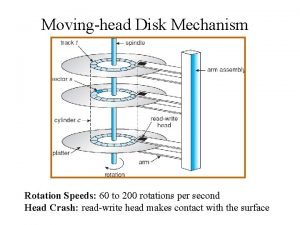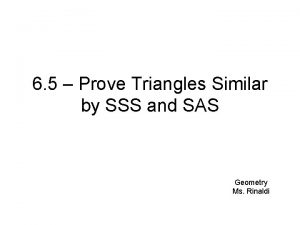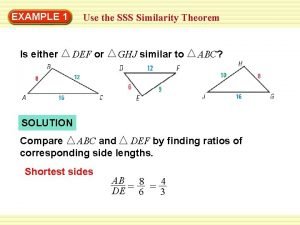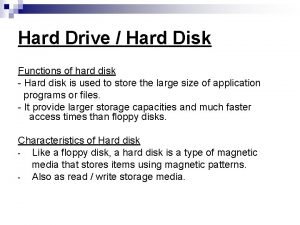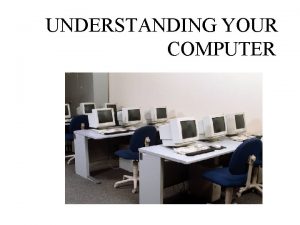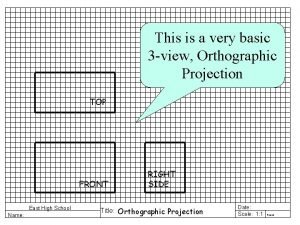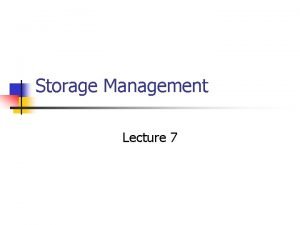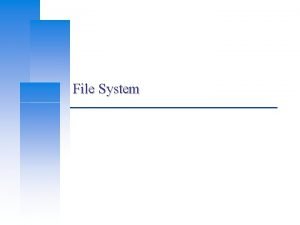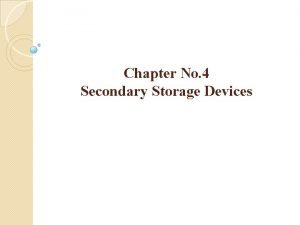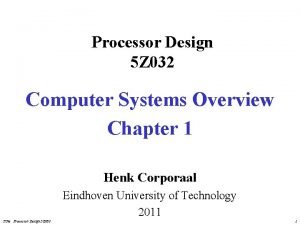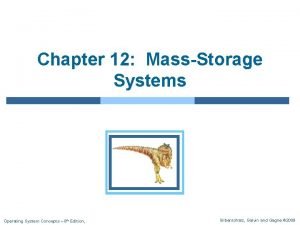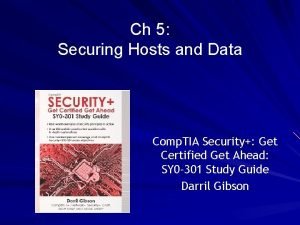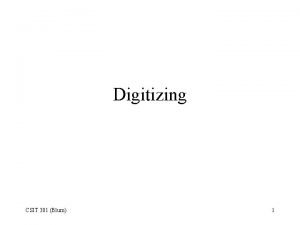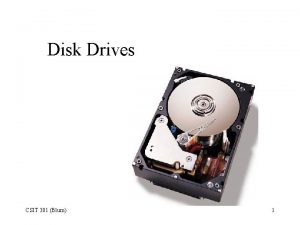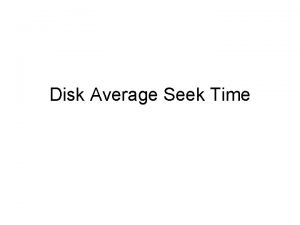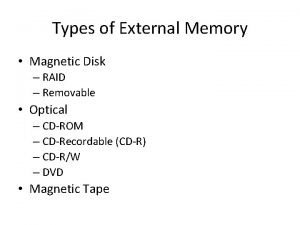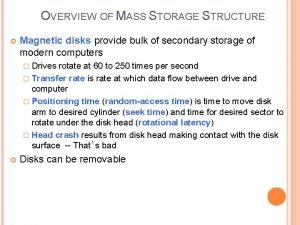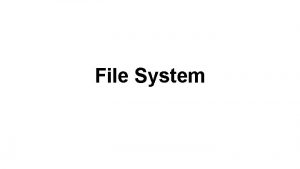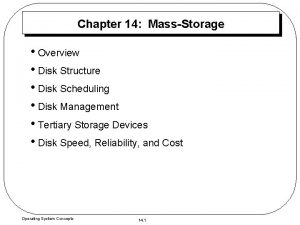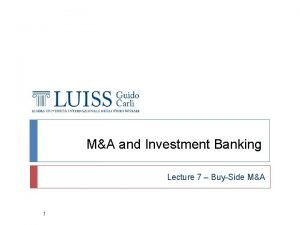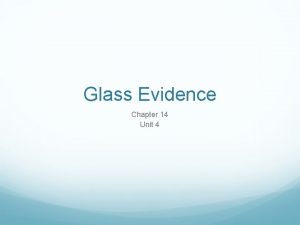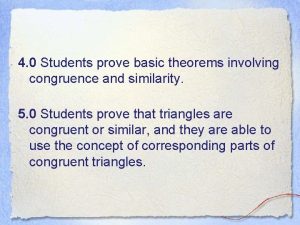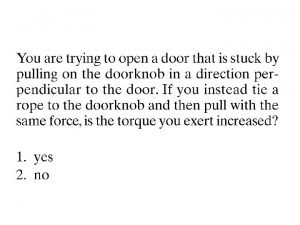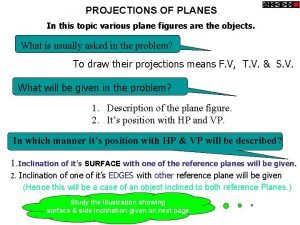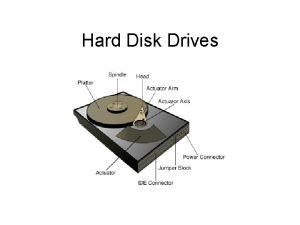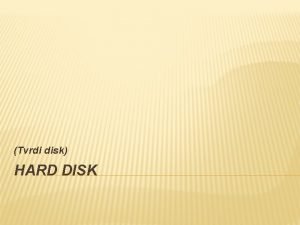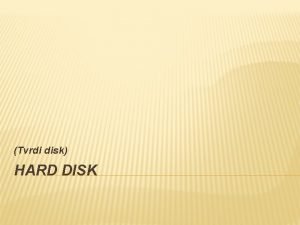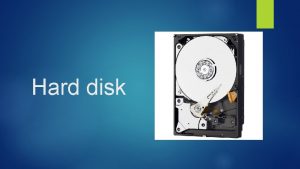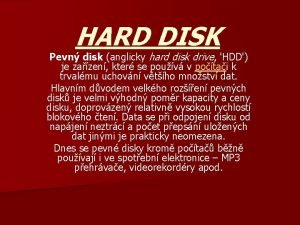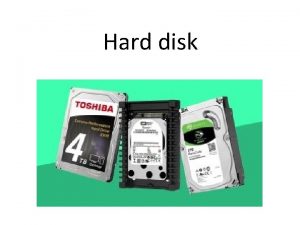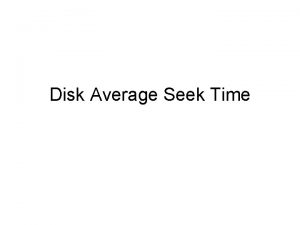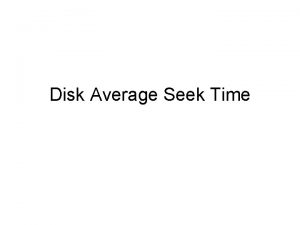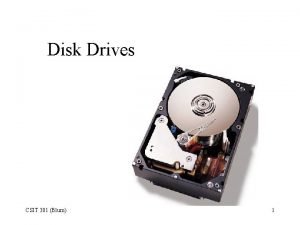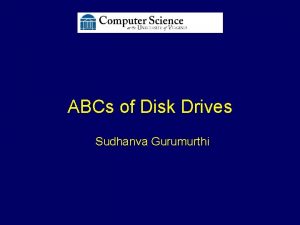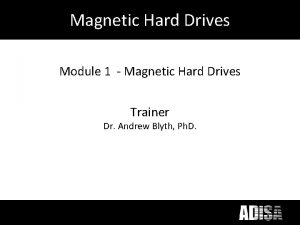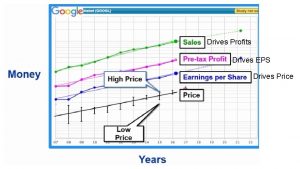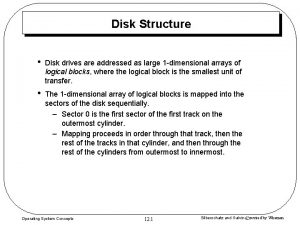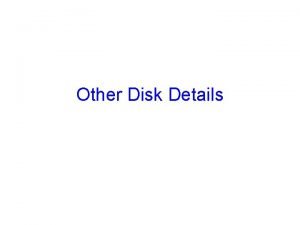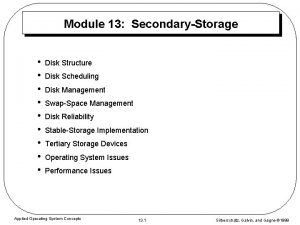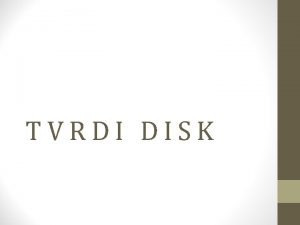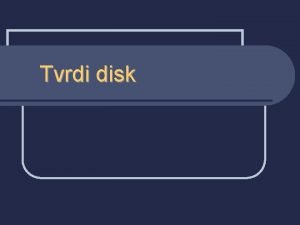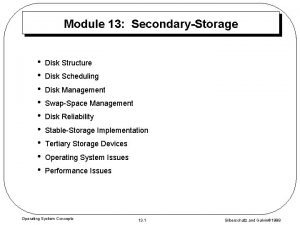Hard Disk Drives ReadWrite Head Side View Western







![Disk I/O Performance 300 Response Queue [OS Paths] Controller User Thread Time (ms) Disk Disk I/O Performance 300 Response Queue [OS Paths] Controller User Thread Time (ms) Disk](https://slidetodoc.com/presentation_image_h2/3ac4236fb5b463daf69c214bc70f6602/image-8.jpg)




























- Slides: 36



Hard Disk Drives Read/Write Head Side View Western Digital Drive http: //www. storagereview. com/guide/ IBM/Hitachi Microdrive

Properties of a Hard Magnetic Disk Sector Platters Track • Properties – Independently addressable element: sector » OS always transfers groups of sectors together—”blocks” – A disk can access directly any given block of information it contains (random access). Can access any file either sequentially or randomly. – A disk can be rewritten in place: it is possible to read/modify/write a block from the disk • Typical numbers (depending on the disk size): – 500 to more than 20, 000 tracks per surface – 32 to 800 sectors per track » A sector is the smallest unit that can be read or written • Zoned bit recording – Constant bit density: more sectors on outer tracks – Speed varies with track location



![Disk IO Performance 300 Response Queue OS Paths Controller User Thread Time ms Disk Disk I/O Performance 300 Response Queue [OS Paths] Controller User Thread Time (ms) Disk](https://slidetodoc.com/presentation_image_h2/3ac4236fb5b463daf69c214bc70f6602/image-8.jpg)
Disk I/O Performance 300 Response Queue [OS Paths] Controller User Thread Time (ms) Disk Response Time = Queue+Disk Service Time 200 100 0 0% 100% Throughput (Utilization) (% total BW) • Performance of disk drive/file system – Metrics: Response Time, Throughput – Contributing factors to latency: » Software paths (can be loosely modeled by a queue) » Hardware controller » Physical disk media • Queuing behavior: – Can lead to big increases of latency as utilization approaches 100%

Magnetic Disk Characteristic • Cylinder: all the tracks under the head at a given point on all surface Head • Read/write data is a three-stage process: Track Sector Cylinder Platter – Seek time: position the head/arm over the proper track (into proper cylinder) – Rotational latency: wait for the desired sector to rotate under the read/write head – Transfer time: transfer a block of bits (sector) under the read-write head • Disk Latency = Queueing Time + Controller time + Seek Time + Rotation Time + Xfer Time Media Time (Seek+Rot+Xfer) Result • Highest Bandwidth: Hardware Controller Request Software Queue (Device Driver) – Transfer large group of blocks sequentially from one track

Typical Numbers of a Magnetic Disk • Average seek time as reported by the industry: – Typically in the range of 8 ms to 12 ms – Due to locality of disk reference may only be 25% to 33% of the advertised number • Rotational Latency: – Most disks rotate at 3, 600 to 7200 RPM (Up to 15, 000 RPM or more) – Approximately 16 ms to 8 ms per revolution, respectively – An average latency to the desired information is halfway around the disk: 8 ms at 3600 RPM, 4 ms at 7200 RPM • Transfer Time is a function of: – – – Transfer size (usually a sector): 512 B – 1 KB per sector Rotation speed: 3600 RPM to 15000 RPM Recording density: bits per inch on a track Diameter: ranges from 1 in to 5. 25 in Typical values: 2 to 50 MB per second • Controller time depends on controller hardware • Cost drops by factor of two per year (since 1991)

Disk Performance • Assumptions: – Ignoring queuing and controller times for now – Avg seek time of 5 ms, avg rotational delay of 4 ms – Transfer rate of 4 MByte/s, sector size of 1 KByte • Random place on disk: – Seek (5 ms) + Rot. Delay (4 ms) + Transfer (0. 25 ms) – Roughly 10 ms to fetch/put data: 100 KByte/sec • Random place in same cylinder: – Rot. Delay (4 ms) + Transfer (0. 25 ms) – Roughly 5 ms to fetch/put data: 200 KByte/sec • Next sector on same track: – Transfer (0. 25 ms): 4 MByte/sec • Key to using disk effectively (esp. for filesystems) is to minimize seek and rotational delays

Disk Tradeoffs • How do manufacturers choose disk sector sizes? – Need 100 -1000 bits between each sector to allow system to measure how fast disk is spinning and to tolerate small (thermal) changes in track length • What if sector was 1 byte? – Space efficiency – only 1% of disk has useful space – Time efficiency – each seek takes 10 ms, transfer rate of 50 – 100 Bytes/sec • What if sector was 1 KByte? – Space efficiency – only 90% of disk has useful space – Time efficiency – transfer rate of 100 KByte/sec • What if sector was 1 MByte? – Space efficiency – almost all of disk has useful space – Time efficiency – transfer rate of 4 MByte/sec











Strip 0 Strip 1 Strip 2 Strip 3 Strip 2 Strip 4 Strip 5 Strip 6 Strip 7 Strip 3 Strip 8 Strip 9 Strip 10 Strip 11 Strip 4 Strip 12 Strip 13 Strip 14 Strip 15 Strip 6 Strip 7 Strip 8 . . . Array Management software Data mapping for a RAID Level 0 Array

Strip 0 Strip 1 Strip 2 Strip 3 Strip 4 Strip 5 Strip 6 Strip 7 Strip 8 Strip 9 Strip 10 Strip 11 Strip 12 Strip 13 Strip 14 Strip 15 RAID Level 1 (Mirrored)

b 0 b 1 b 2 b 3 f 0(b) RAID Level 2 (Redundancy through Hamming Code) f 1(b) f 2(b)

b 0 b 1 b 2 b 3 P(b) RAID Level 3 (Bit interleaved Parity)


block 0 block 1 block 2 block 3 P(0 -3) block 4 block 5 block 6 block 7 P(4 -7) block 8 block 9 block 10 block 11 P(8 -11) block 12 block 13 block 14 block 15 P(12 -15) 90 RAID Level 4 (Block level Parity)


RAID Level 5 (Block level Distributed parity) block 0 block 1 block 2 block 3 P(0 -3) block 4 block 5 block 6 P(4 -7) block 7 block 8 block 9 P(8 -11) block 10 Block 11 block 12 P(12 -15) block 13 block 14 Block 15 block 12






 Ina twitter
Ina twitter The head of a moving head disk
The head of a moving head disk The head of moving head disk with 100 tracks
The head of moving head disk with 100 tracks Side side side similarity theorem
Side side side similarity theorem Side angle side theorem
Side angle side theorem Sss similarity theorem examples
Sss similarity theorem examples What is aa similarity theorem
What is aa similarity theorem Function of the hard disk drive
Function of the hard disk drive There are two basic types of disk drives
There are two basic types of disk drives Top view is directly above the front view
Top view is directly above the front view Disk storage types
Disk storage types Computer hard disk
Computer hard disk Which of the following are magnetic storage devices
Which of the following are magnetic storage devices Nkb032 sensor
Nkb032 sensor Fixed hard disk
Fixed hard disk Portable hard disk
Portable hard disk Hard disk 1 (301)
Hard disk 1 (301) Easyhaler
Easyhaler Windows xp virtual machine
Windows xp virtual machine Hard disk 301
Hard disk 301 Seek time in magnetic disk
Seek time in magnetic disk On the western side
On the western side Fixed-head magnetic disk storage
Fixed-head magnetic disk storage Moving head disk mechanism
Moving head disk mechanism Moving head disk mechanism
Moving head disk mechanism Moving head disk mechanism
Moving head disk mechanism What makes water hard
What makes water hard Work hard have fun make history
Work hard have fun make history Hard times hard drive
Hard times hard drive Perfect competition side by side graphs
Perfect competition side by side graphs Tea side by side
Tea side by side M&a process timeline
M&a process timeline Soda lime uses
Soda lime uses Smtyk
Smtyk Two wheels roll side by side
Two wheels roll side by side Bevel groove weld
Bevel groove weld A semicircular plate of 80mm diameter
A semicircular plate of 80mm diameter


